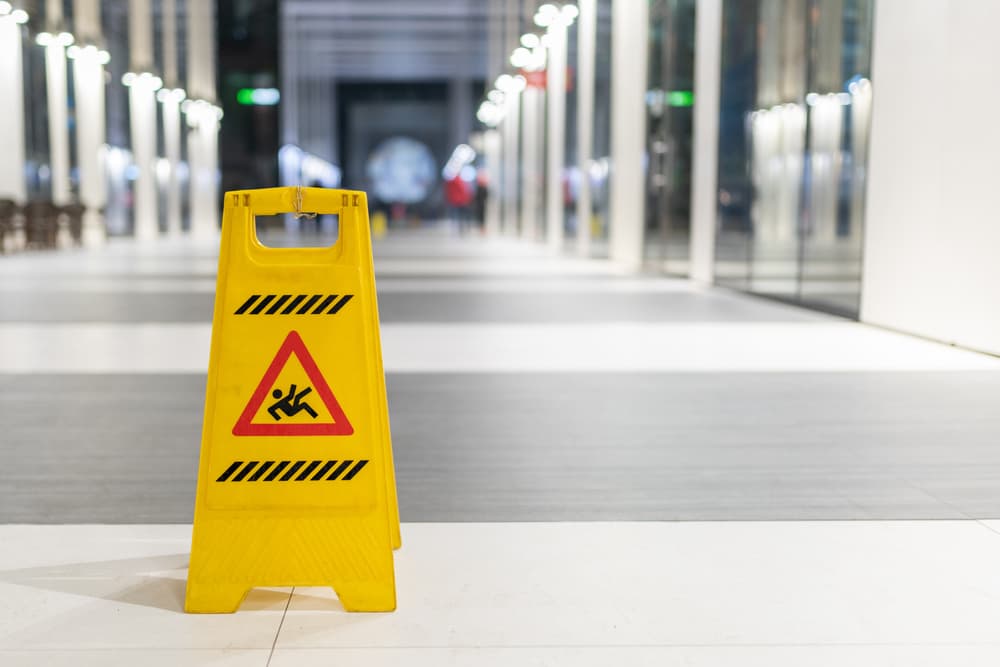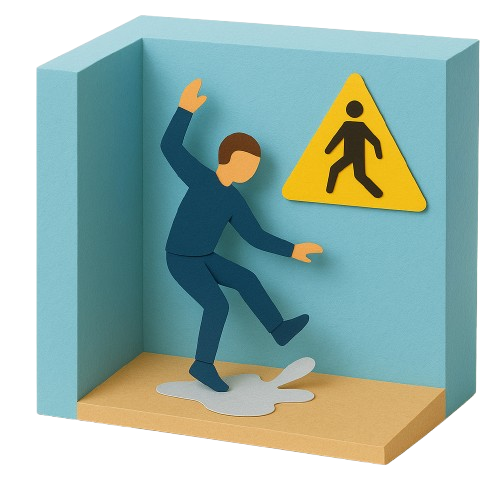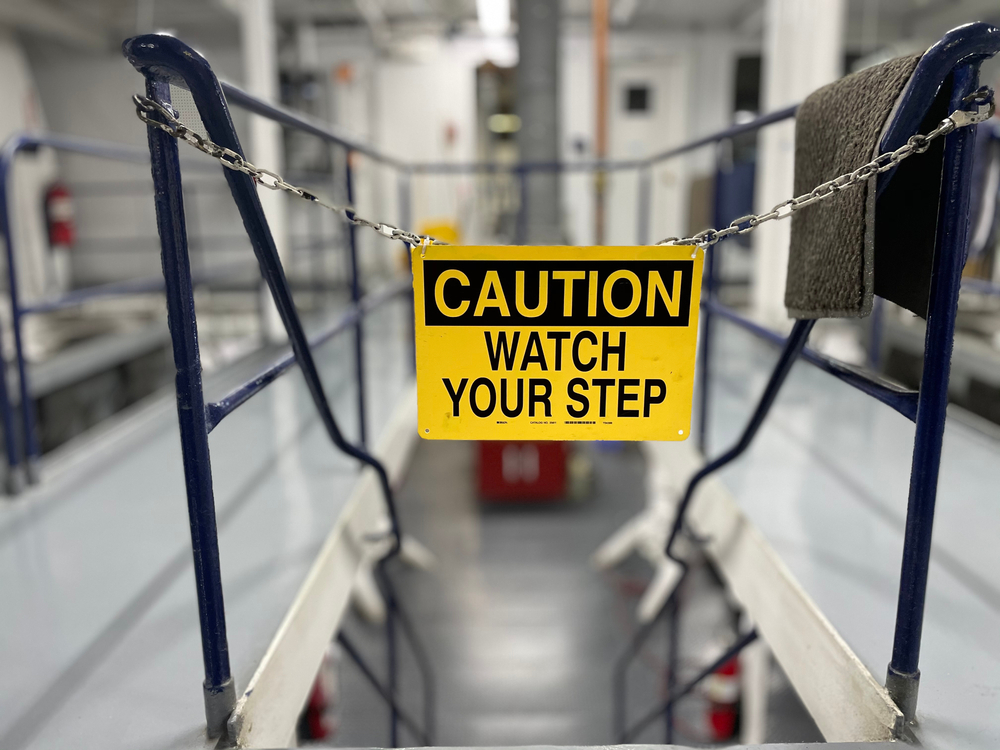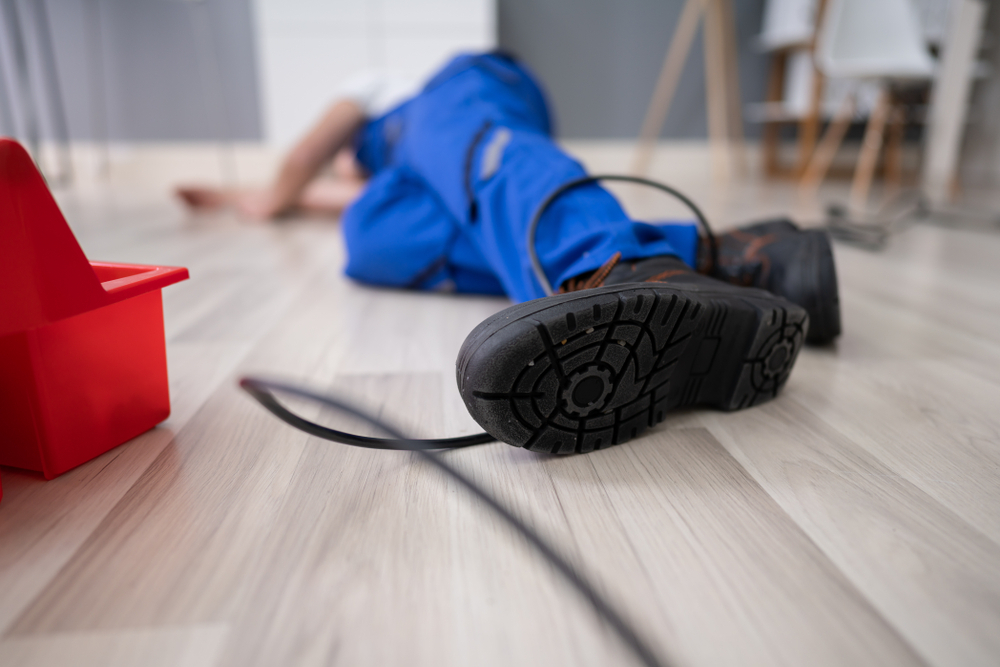Slip and Fall Prevention: How Vision AI is Creating Safer Workplaces

See It In Action

Safety AI Software in Action
See how Visionify's Safety AI Software monitors workplace safety in real-time
Example Videos
Safety AI Software in Action
See how Visionify's Safety AI Software monitors workplace safety in real-time
Slip and Fall Prevention with Vision AI
See how Vision AI monitors slip and fall hazards in real-time to prevent accidents
Office Slip & Fall Incident
Enable Slip & Fall in Office area for better safety
Key Takeaways
- Real-time Hazard Detection: Vision AI continuously monitors environments to identify slip and fall risks as they develop
- Significant Cost Reduction: Technology helps prevent accidents that cost businesses over $11 billion annually
- Proactive Maintenance: System identifies maintenance needs before they become safety hazards
- Comprehensive Monitoring: Detects multiple risk factors simultaneously across entire facilities
- Data-driven Safety Improvements: Provides actionable insights to optimize safety measures and target high-risk areas
The Slip and Fall Challenge
Slip and fall incidents represent one of the most common and costly workplace safety challenges across all industries. According to the U.S. Bureau of Labor Statistics, slips, trips, and falls accounted for 880 workplace fatalities in 2019, representing 17.4% of all fatal occupational injuries. Additionally, these incidents resulted in approximately 244,000 nonfatal workplace injuries involving days away from work.
The financial impact is equally alarming. The Liberty Mutual Workplace Safety Index 2022 indicates that workplace injuries and illnesses related to slips, trips, and falls cost businesses over $11 billion, accounting for around 20% of total compensation costs. The average cost of a single slip and fall injury is approximately $20,000, not including lost productivity and increased insurance premiums.
 Slip and fall incidents are among the most common workplace accidents
Slip and fall incidents are among the most common workplace accidents
The Preventable Nature of Slip and Fall Accidents
The Occupational Safety and Health Administration (OSHA) identifies slips and falls as one of the leading causes of workers' compensation claims and occupational injuries. However, OSHA also acknowledges that most slip-and-fall accidents in the workplace are avoidable with proper prevention measures.
Traditional approaches to slip and fall prevention have relied on manual inspections, warning signs, and reactive measures after incidents occur. While these methods have their place, they are limited by human factors such as oversight, inconsistency, and the inability to monitor all areas continuously.
Vision AI: A Revolutionary Approach to Slip and Fall Prevention
Vision AI represents a transformative approach to slip and fall prevention. This specialized form of artificial intelligence analyzes visual data from standard cameras, identifying potential hazards and risk factors in real-time before accidents occur.
Unlike traditional methods that rely on periodic inspections or post-incident responses, Vision AI provides continuous monitoring, enabling immediate intervention when hazardous conditions develop. The technology doesn't just see—it understands context, recognizes patterns, and makes split-second assessments that can prevent accidents before they happen.
How Vision AI Prevents Slips and Falls
1. Real-time Hazard Detection
Vision AI excels at identifying potential slip and fall hazards as they develop. The system can detect:
- Spilled liquids on floors
- Objects obstructing walkways
- Loose cables or floor coverings
- Uneven surfaces
- Poor lighting conditions
- Wet entrance areas during rainy weather
By spotting these hazards in real-time, Vision AI enables immediate intervention, preventing accidents rather than merely responding to them after they occur.
 Vision AI can detect spills and obstacles that may cause slip and fall accidents
Vision AI can detect spills and obstacles that may cause slip and fall accidents
2. Surface Analysis and Monitoring
The technology goes beyond simple object detection to analyze surface characteristics that might contribute to slip and fall incidents:
- Assessing floor slipperiness
- Identifying worn floor surfaces
- Detecting changes in floor conditions
- Monitoring transition areas between different flooring types
- Analyzing reflectivity that might indicate wet surfaces
This sophisticated analysis helps identify areas that require maintenance or modification before they become accident sites.
3. Fall Detection and Response
In addition to preventing falls, Vision AI can detect when someone has fallen or is at risk of falling:
- Recognizing abnormal human postures and movements
- Identifying when a person is unstable or off-balance
- Detecting actual fall events in real-time
- Triggering immediate alerts to emergency responders
- Documenting incidents for analysis and prevention
This capability ensures rapid response when accidents do occur, potentially reducing the severity of injuries through prompt medical attention.
4. Data-driven Insights for Risk Assessment
Vision AI generates valuable data that helps organizations understand and address the root causes of slip and fall incidents:
- Identifying high-risk areas or "hotspots"
- Recognizing patterns in when and where incidents occur
- Correlating environmental factors with accident rates
- Measuring the effectiveness of preventive measures
- Providing evidence-based recommendations for safety improvements
These insights enable organizations to implement targeted preventive measures tailored to their specific environment and challenges.
Vision AI in Action: A Real-World Scenario
Imagine a busy retail environment where customers and employees are constantly moving throughout the store. Traditional slip and fall prevention relies on employees spotting and addressing hazards—an impossible task given their other responsibilities.
With Vision AI, cameras positioned throughout the facility continuously monitor for potential hazards. When a customer spills a beverage in an aisle, the system immediately:
- Identifies the spill as a slip hazard
- Sends an alert to store management with the exact location
- Continues monitoring to ensure no one approaches the hazard
- Records when the spill is cleaned up
- Documents the entire incident for safety analysis
This real-time intervention prevents potential injuries while generating valuable data for improving safety programs.
The Business Case for Vision AI in Slip and Fall Prevention
The financial implications of slip and fall incidents make a compelling case for investing in Vision AI technology:
- Reduced Compensation Costs: Preventing even a few incidents can save hundreds of thousands of dollars in workers' compensation claims
- Lower Insurance Premiums: Documented safety improvements can lead to reduced insurance costs
- Minimized Productivity Losses: Fewer accidents mean fewer lost workdays and disruptions
- Decreased Litigation Expenses: Proactive prevention reduces costly lawsuits
- Enhanced Reputation: Demonstrating commitment to safety improves both customer and employee perceptions
Additionally, Vision AI can typically work with existing camera infrastructure, minimizing implementation costs while maximizing return on investment.
 Slip and fall can happen in any workplace
Slip and fall can happen in any workplace
Implementation and Integration
Implementing Vision AI for slip and fall prevention is straightforward and non-disruptive:
- Assessment: Evaluate existing camera coverage and identify optimal placement for monitoring high-risk areas
- Installation: Deploy the Vision AI software system and connect it to the camera network
- Configuration: Customize alert thresholds and notification protocols to match organizational needs
- Training: Provide brief training for safety personnel on system operation and response procedures
- Monitoring and Refinement: Continuously improve the system based on performance data and feedback
The technology integrates seamlessly with existing safety programs, enhancing rather than replacing traditional safety measures.
Conclusion
Slip and fall incidents represent a significant safety and financial challenge for organizations across all industries. Vision AI offers a revolutionary approach to addressing this challenge, providing continuous monitoring, early hazard detection, and data-driven insights that traditional methods cannot match.
By implementing Vision AI for slip and fall prevention, organizations can create safer environments for employees and customers while significantly reducing the costs associated with workplace accidents. As this technology continues to evolve, it will become an essential component of comprehensive safety programs in forward-thinking organizations.
The future of slip and fall prevention lies not in choosing between traditional safety measures and advanced technology, but in combining both approaches to create safer workplaces for everyone.
Ready to transform your slip and fall prevention program with Vision AI? Contact Visionify today to learn how our solutions can help protect your workers and customers while reducing accident-related costs.
Frequently Asked Questions
Find answers to common questions about this topic
Want to learn more?
Discover how our Vision AI safety solutions can transform your workplace safety.
Schedule a DemoSchedule a Meeting
Book a personalized demo with our product specialists to see how our AI safety solutions can work for your business.
Choose a convenient time
Select from available slots in your timezone
30-minute consultation
Brief but comprehensive overview of our solutions
Meet our product experts
Get answers to your specific questions
Related Articles
Subscribe to our newsletter
Get the latest safety insights and updates delivered to your inbox.


